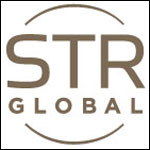STR releases updated forecasts for 2009 and 2010
 As part of its new monthly forecast program, STR is projecting a 17.1-percent decrease in revenue per available room for the U.S. hotel industry in 2009. The company also revised its forecasts for the summer travel season, year-end 2009 and 2010.
As part of its new monthly forecast program, STR is projecting a 17.1-percent decrease in revenue per available room for the U.S. hotel industry in 2009. The company also revised its forecasts for the summer travel season, year-end 2009 and 2010.
STR’s forecast projects 2009 occupancy to be down 8.4 percent to 55.4 percent and 2009 ADR to decline 9.7 percent to US$96.37. It projects RevPAR to end 2009 at US$53.41.
“It is disappointing, surprising and a little bit sad,” said Mark Lomanno, STR president. “One of the things we felt like was that the industry would hold pricing more than it’s been able to. A lot of the commentary that we heard from the brands and the revenue managers is that they learned their lessons in 2001-2002, and they would be able to react better the next time around. For whatever reason, maybe because this downturn is so severe and so dramatic and so different than they were expecting, what they learned they weren’t able to apply.”
Despite hopes of a busy summer, the forecast indicates the usually robust season will not provide much relief for the industry. In year-over-year comparisons, occupancy is expected to be down 8.4 percent from June through August. ADR is predicted to decrease 10.4 percent, and RevPAR is projected to decline 18.7-percent.
The outlook for 2010 looks slightly better than 2009, but still the industry is still expected to end 2010 with decreases in all three key metrics. Occupancy is projected to end 2010 with a 0.3-percent decrease, ADR is forecasted to end 2010 with a 3.4 percent decrease, and RevPAR is expected to end 2010 with a 3.7-percent decline.
ADVERTISEMENT
“The reality is it’s going to take that group business to get back for the industry’s fundamentals to start improving,” Lomanno said. “I don’t know how long it will take to get it back to the levels it was in 2006, 2007 and maybe the beginning of 2008. That’s going to need to get into a range that’s 90 percent to 95 percent of where it was before, which will generate transient demand, and then there will be some pricing power. On an inflation-adjusted basis, it’s probably going to be longer than six years before the rates get back to 2007 levels.”
Lomanno finished by saying: “Absent some other event, it looks like we’re bouncing along the bottom. You’ve got to get to the bottom before you can start going up.”
STR’s monthly forecast is part of the company’s efforts to keep its clients informed about the industry’s performance. Economic variables used in the monthly forecasting model will include employment figures, consumers’ disposable income data, the consumer price index, gross domestic product, and the usual lodging data that goes into a forecast, according to Lomanno. It will also include data from partner e-forecasting.com and will use feedback from its clients and industry contacts.
“It’s important to be able to regularly update the industry about where the data is pointing to,” Lomanno said. “We can make it more finite and at the same time potentially make it more accurate by not building up to the year-end numbers as if that’s where you start. You want to get to that by aggregating month by month.”

